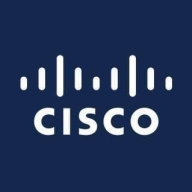

Cisco ACI and Meraki SD-WAN are key competitors in the field of network management solutions. While both products have strengths, Cisco ACI offers advanced integration and scalability, giving it an edge in complex IT environments.
Features: Cisco ACI excels with centralized management, scalability, and extensive automation capabilities. It integrates with various virtual environments, supporting multi-tenancy and network segmentation. Meraki SD-WAN stands out for its ease of configuration through a cloud-based dashboard, Auto VPN, and traffic shaping, focusing on simplicity and quick integration.
Room for Improvement: Cisco ACI can improve its user-friendliness and reduce complexity and costs as its features might not be fully utilized by all users. It could also benefit from better multi-cloud capabilities. Meraki SD-WAN could enhance its security features and bolster integration capabilities to match enterprise-level solutions.
Ease of Deployment and Customer Service: Cisco ACI's on-premises deployment often requires professional setup, increasing deployment time. Customer service is generally positive but varies with complexity. Meraki SD-WAN offers flexible deployment across cloud, hybrid, and on-premises environments, focusing on simplicity and efficient customer support for straightforward assistance.
Pricing and ROI: Cisco ACI is often seen as expensive due to smart licensing, although it offers returns through operational efficiency. Meraki SD-WAN provides a more budget-friendly solution with flexible licensing, appealing to cost-conscious clients while delivering effective network management. Both demonstrate ROI through operational improvements, with Meraki being particularly cost-effective.
Efficient utilization leads to cost savings and efficiency gains.
The technical support from Cisco is satisfactory.
When issues occur, the TAC is not able to provide much support, leading to difficulties in finding RCAs.
We raised it in TAC, and they were very approachable and supportive.
The solution offers high performance and scalability with connectivity options up to 100 GS.
You can use the multi-site and multi-pod features, which help you scale the data center over the WAN and create large sites.
The scalability of Cisco ACI supports our organization's growth effectively.
Scalability depends on the model number of each switch, but generally, it is scalable according to need.
For stability, Cisco ACI rates a nine or 9.5 because I've seen three customers using Cisco ACI and once deployed, the solution is very stable.
Sometimes it is not working in Azure or GCP as it has interoperability only with some clouds, so that part needs work.
Their lack of on-ground offices can result in business losses.
VeloCloud provides much more detail and many more tabs for troubleshooting everything, such as ARP, IPv4, IPv6, TCP dumps, routing, and switching.
I work with Fortinet where with a single command you can deploy the entire SD-WAN along with FortiGuard within minutes.
In general, Cisco ACI is on the higher side; it's not a cheap solution.
Cisco's pricing tends to be on the higher end compared to other vendors.
If the license expires in FortiGate, the basic functionality will work, but in Meraki SD-WAN, the entire system will shut down.
Cisco ACI provides substantial capability; you can design your network accordingly and it's part of the SDN family, providing many benefits to the organization, especially when moving from traditional network infrastructure.
Its features, like easy application deployment, short deployment time for new applications or software, and eliminating the hassle of STP, are appreciated.
It is essential for growing our data center connectivity and enablement for our customers.
The real-time visibility and analytics capabilities of Meraki SD-WAN are very good for troubleshooting ports, especially when viewing traffic running on these ports in real time.
The architecture allows us to see whether the physical cable is connected or disconnected.
| Product | Market Share (%) |
|---|---|
| Meraki SD-WAN | 21.2% |
| Cisco ACI | 13.2% |
| Other | 65.6% |


| Company Size | Count |
|---|---|
| Small Business | 21 |
| Midsize Enterprise | 18 |
| Large Enterprise | 87 |
| Company Size | Count |
|---|---|
| Small Business | 38 |
| Midsize Enterprise | 13 |
| Large Enterprise | 31 |
Cisco ACI provides advanced capabilities with features like seamless integration with VMware and APIs for programmability. It offers centralized management for streamlined operations, efficient micro-segmentation, and robust security, addressing modern data center needs.
Cisco ACI brings automation to data center infrastructure, enabling transitions from legacy to modern environments with centralized management. Organizations benefit from optimized server farms, seamless integration with VMware, and support for Kubernetes, making it suitable for large-scale environments. Offering support for healthcare, finance, and public sectors, Cisco ACI facilitates tasks such as virtual networking and multi-site connectivity with application-centric and network-centric designs.
What are the key features of Cisco ACI?In the healthcare industry, Cisco ACI supports secure and efficient data management, accommodating regulatory needs and enhancing patient data handling. Financial institutions benefit from robust security and seamless integration with existing infrastructures, facilitating smooth transaction processing. In the public sector, it's utilized for reliable network management and servicing a diverse range of applications.
Software-defined WAN is a new approach to network connectivity that lowers operational costs and improves resource usage for multi-site deployments, allowing network administrators to use bandwidth more efficiently and ensure the highest possible level of performance for critical applications without sacrificing security or data privacy. For more information on deploying and configuring SD-WAN on the Meraki MX Security Appliance, see the Meraki SD-WAN Deployment Guide.
We monitor all Software Defined Networking (SDN) reviews to prevent fraudulent reviews and keep review quality high. We do not post reviews by company employees or direct competitors. We validate each review for authenticity via cross-reference with LinkedIn, and personal follow-up with the reviewer when necessary.